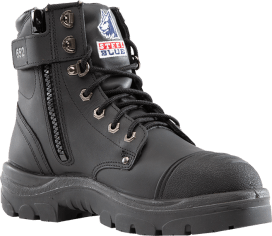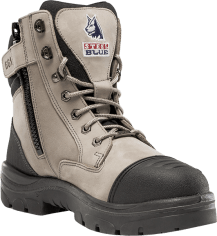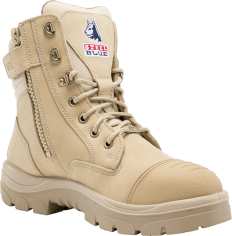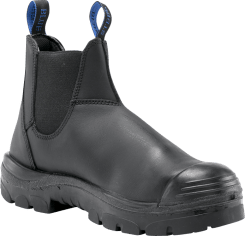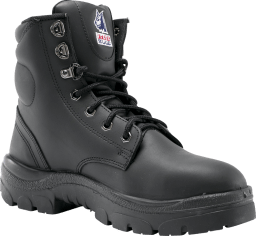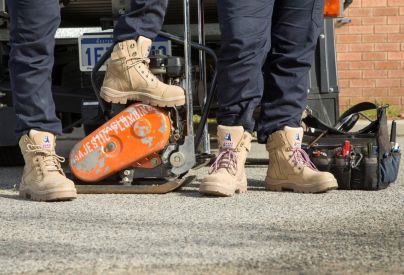Work boot safety standards explained
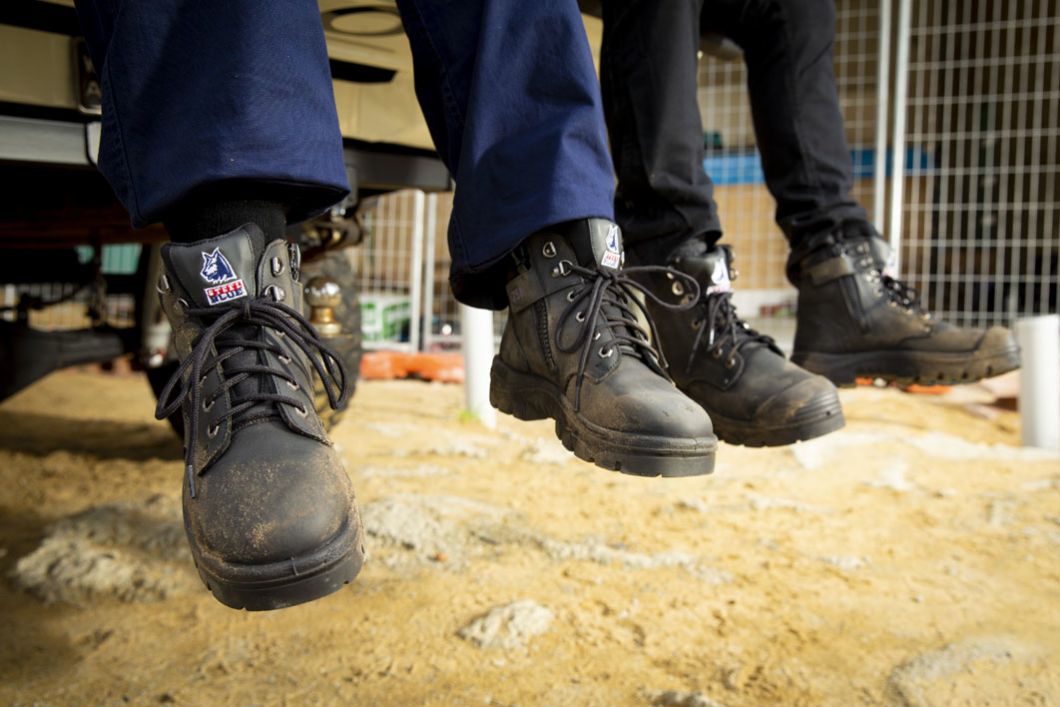
Know your limits to stay safe on site
We throw around the term “steel caps” fairly freely these days. In conversation, it refers to virtually all types of safety boots worn on job sites.
From oil rigs to remote mine sites, foundries to factories, dock work to digging a ditch, steel cap work boots are standard.
But there’s more to work safety boot standards than you might think.
Let’s dive into the difference between international safety standards and what it means for your protection on the job.
The steel cap safety standards you need to know
For work boots to pass muster, they must meet strict standards.
What exactly those standards involve –the tests and trials that your boots need to endure – changes slightly depending on where you work.
To simplify things, Steel Blue steel cap work boots comply with major safety specifications worldwide. Whether you’re driving a forklift in Detroit or prospecting in the Pilbara, Steel Blue boots enable you to excel in all conditions.
Australian and New Zealand safety standards for work boots
Steel cap boots in Australia need to comply with two safety standards:
- AS/NZS 2210.3 (ISO 20345:2011, MOD)
Toe protection is the minimum standard to meet this standard. Steel or composite toe protection must pass impact and compression tests to ensure your feet are safe from a drop force of 200 joules.
- AS/NZS 2210.5 (ISO 20347:2012, MOD)
Commonly called the “Occasional Footwear Standard”, 2210.5 puts a safety boot through its paces, testing for:
- Non-slip sole performance
- Ergonomics
- Upper, midsole and lining material quality
- Outsole material testing

ASTM F2413-18
After reviews in 2005 and 2009, OSHA’s PPE requirements for manual workers have been revised for the 21st century.
Safety boot performance was included in that review. After all, steel cap boot technology has come a long way since 2005.
ASTM F2412-18a covers the standard tests for foot protection, including impact and compression resistance. But the standard to focus on is ASTM F 2413-18.
ASTM F 2413-18 covers work boots manufactured with an integrated composite or steel toe cap. As well as impact and compression, the required tests can include:
- Conductive protection
- Electrical Hazard (EH) protection
- Electrical properties
- Puncture resistance
It’s important to note that your safety boots don’t need to pass all these tests to be effective. Instead, electrician’s boots need to meet EH standards, and Met-Guard boots need to meet metatarsal protection standards. Otherwise, the manufacturer cannot legally claim the boots offer extra protection.
EN ISO 20345
European and international PPE safety standards were synchronised in the late ’80s. Today, most of the world’s safety boots are tested against EN ISO 20345. Specifically, the 2011 revision, which was updated to include updated text and adapted tests for today’s trades.
Similar to AS/NZS and ASTM standards, EN ISO 20345 sets performance benchmarks for safety boots in a range of criteria, including:
- Drop force
- Slip resistance
- Ankle support
- Heat resistance
- Water resistance
- Insole abrasion resistance
Specialist footwear standards, like EN ISO 20349-1 foundry footwear and EN ISO 17249, forestry footwear, are based on 20345 with supplementary text based on specific risks.
How to choose safety boots that will support you every day
It’s not a stretch to say labels save lives when it comes to PPE.
Steel cap work boots are required to carry a label indicating which standards they comply with and which safety features are built in.
Check these labels carefully. Some manufacturers might make confusing claims, such as promoting their work boots as “non-slip” and “water repellent”.
Here are the common label marking you should look for:
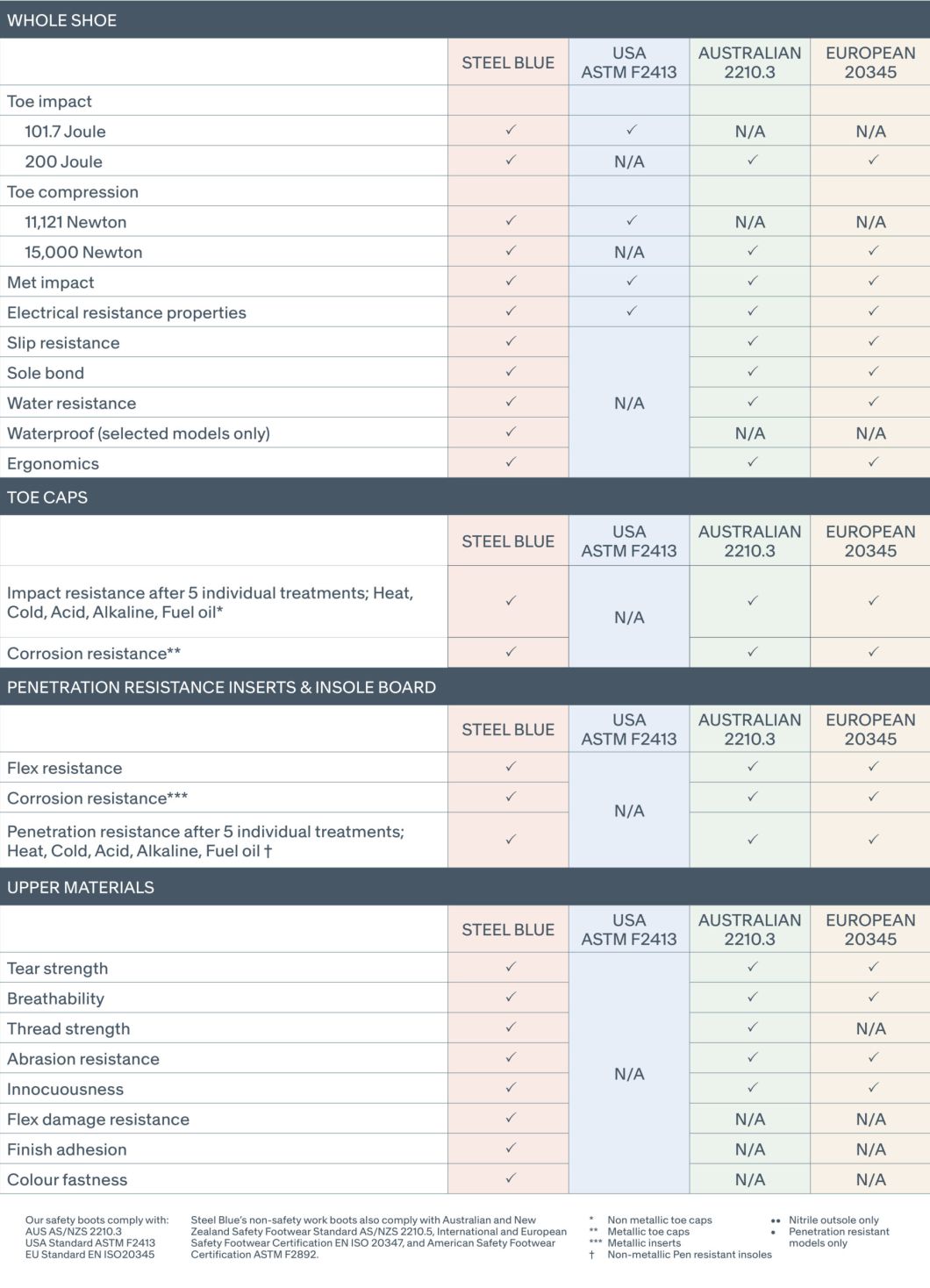
Steel Blue safety boots are built to exceed safety standards
At the end of the day, you can’t afford to compromise on comfort or safety at work.
All Steel Blue composite and steel cap work boots are tested rigorously and regularly to ensure they continue to meet your expectations.
When it comes to work safety boots, we know the difference that great equipment makes. So to help you excel at your job and get home safe every day, we’ve raised our own standards.
For example, Steel Blue safety boots feature non-slip soles that exceed international standards. They are also anti-static, dissipating accumulated electricity to prevent shocks.
We also make specialist steel cap work boots for the most challenging conditions. Steel Blue EH electrician boots for electrical hazardous industries, and penetration resistant boots are all tailor-made for your work.
Make sure you’re outfitting yourself with the best equipment. Browse the full Steel Blue range or find a retailer near you.


